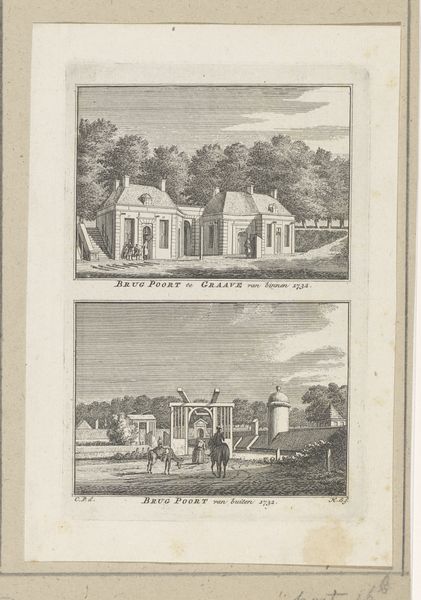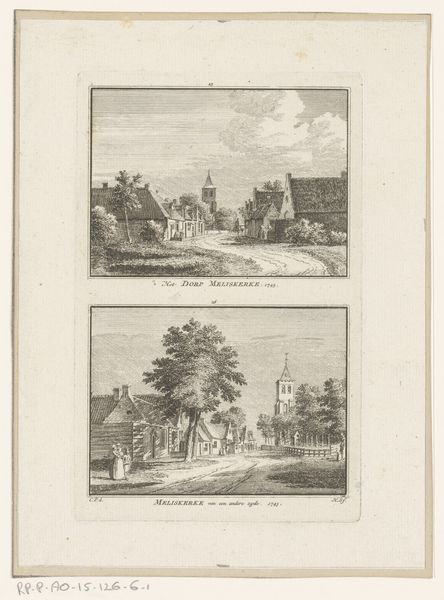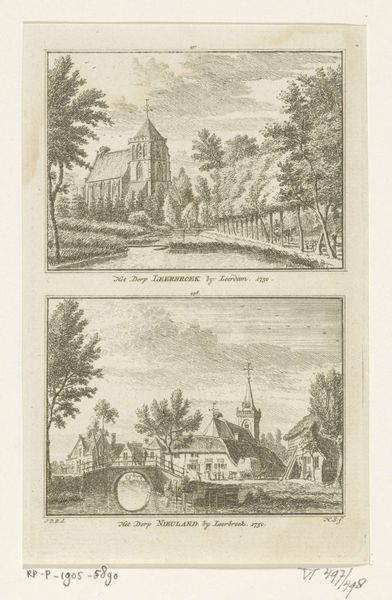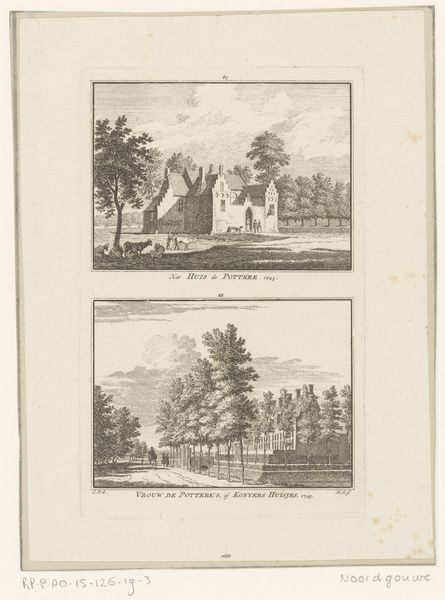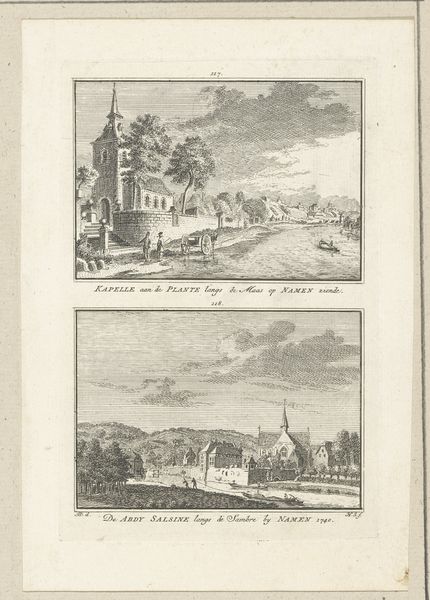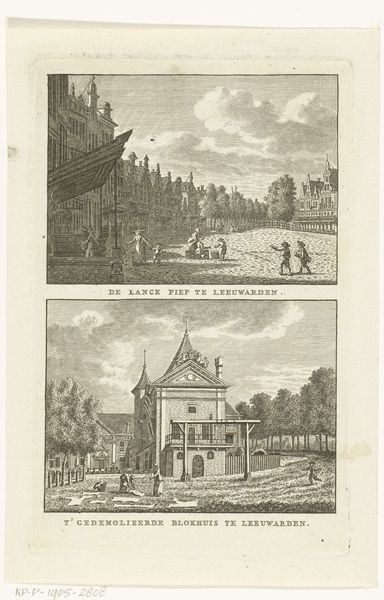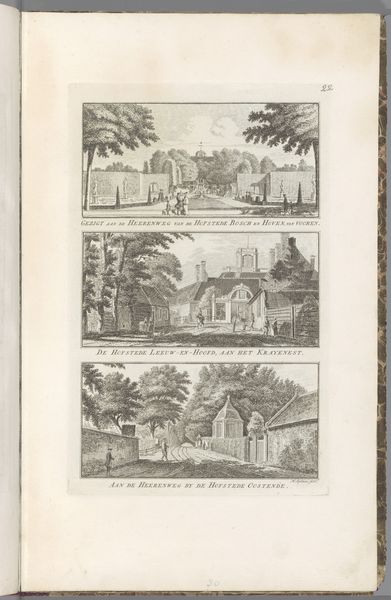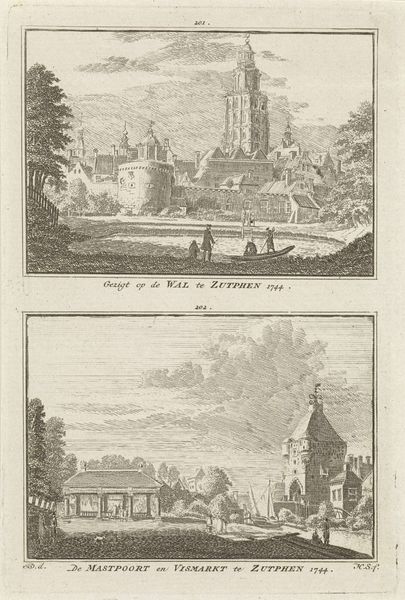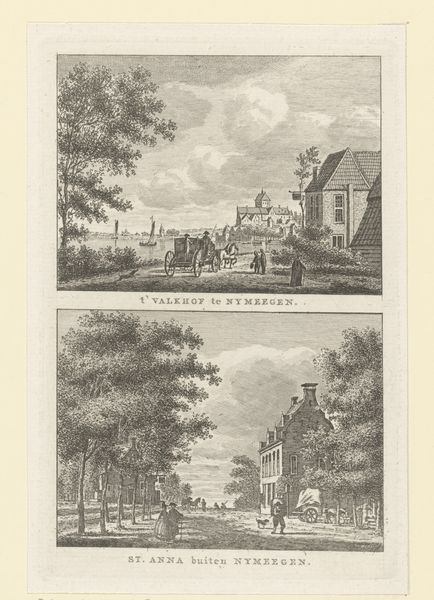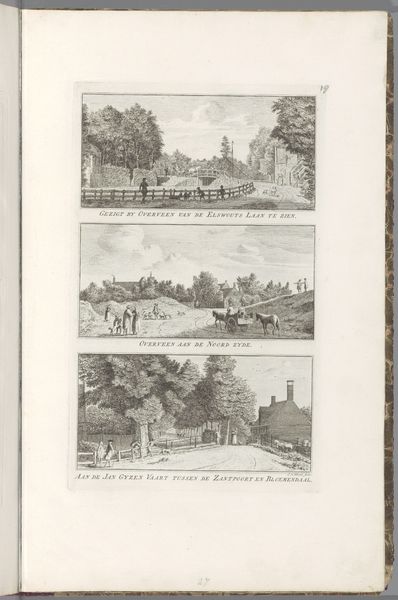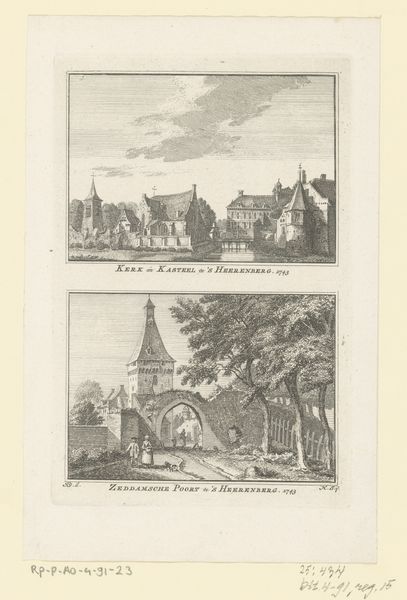
Gezicht op de Ketenpoort en gezicht op de Wester- of Koepoort te Enkhuizen, 1726 1752 - 1792
0:00
0:00
Dimensions: height 164 mm, width 108 mm
Copyright: Rijks Museum: Open Domain
Hendrik Spilman etched this view of the Ketenpoort and Wester- or Koepoort in Enkhuizen in 1726. The gates, stoic sentinels of the city, symbolize protection and passage, yet they also speak to more profound concepts. City gates are an archetype found across cultures, from ancient Mesopotamian cities to medieval European fortresses, all representing a threshold—a point of transition between the known and the unknown, safety and potential threat. Consider the arch itself, a recurring motif in human architecture. Arches have appeared throughout history, from Roman aqueducts to Gothic cathedrals. The arch is not only a feat of engineering, enabling the distribution of weight and the creation of expansive openings, but also has a symbolic significance. Psychologically, we are drawn to the arch as a symbol of aspiration and triumph, a testament to human ingenuity. These gates, therefore, are not merely boundaries. They are emblems of human endeavor, encapsulating centuries of collective hope and the enduring human need for security and exploration.
Comments
No comments
Be the first to comment and join the conversation on the ultimate creative platform.
